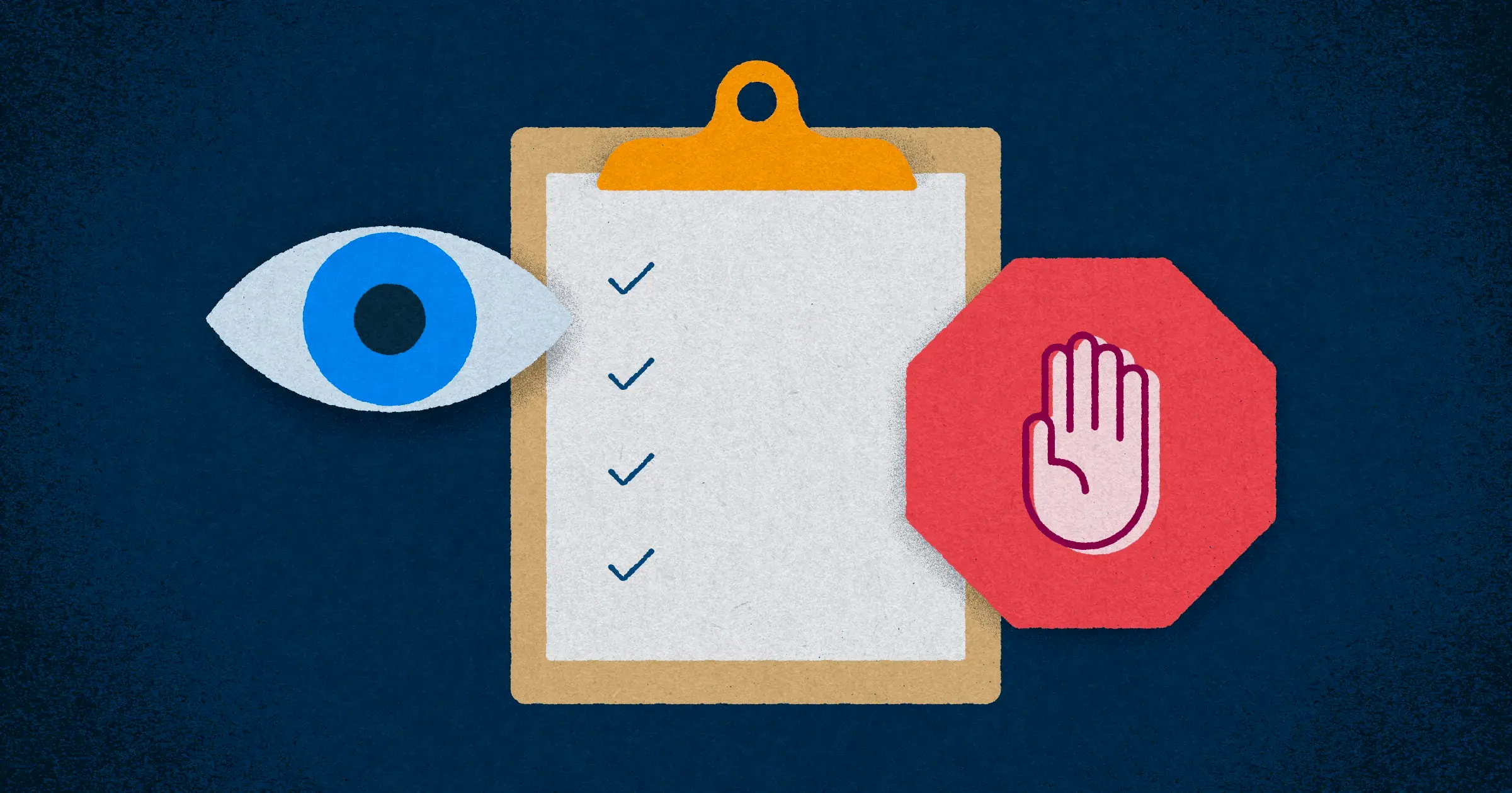
What PMs Need To Know About Compliance Reporting Requirements
Meeting compliance reporting requirements is a big project in and of itself – so who better than a project manager to tackle it?
Still, if you’re a PM and dreading the headache, know that compliance is totally manageable if you break it down and address it in pieces over time. Check out our take on what you should be doing as a project manager to make it easier to manage compliance reporting requirements, including:
- FAQs on how compliance reporting works
- Pitfalls to avoid during compliance reporting
- Tips to ensure you’re always meeting your compliance requirements
How Compliance Reporting Works
New to this and not sure how to meet your compliance reporting requirements? Let’s start with the basics: where, when, and why you’ll need to think about compliance.
A well-tracked internal security table in Visor
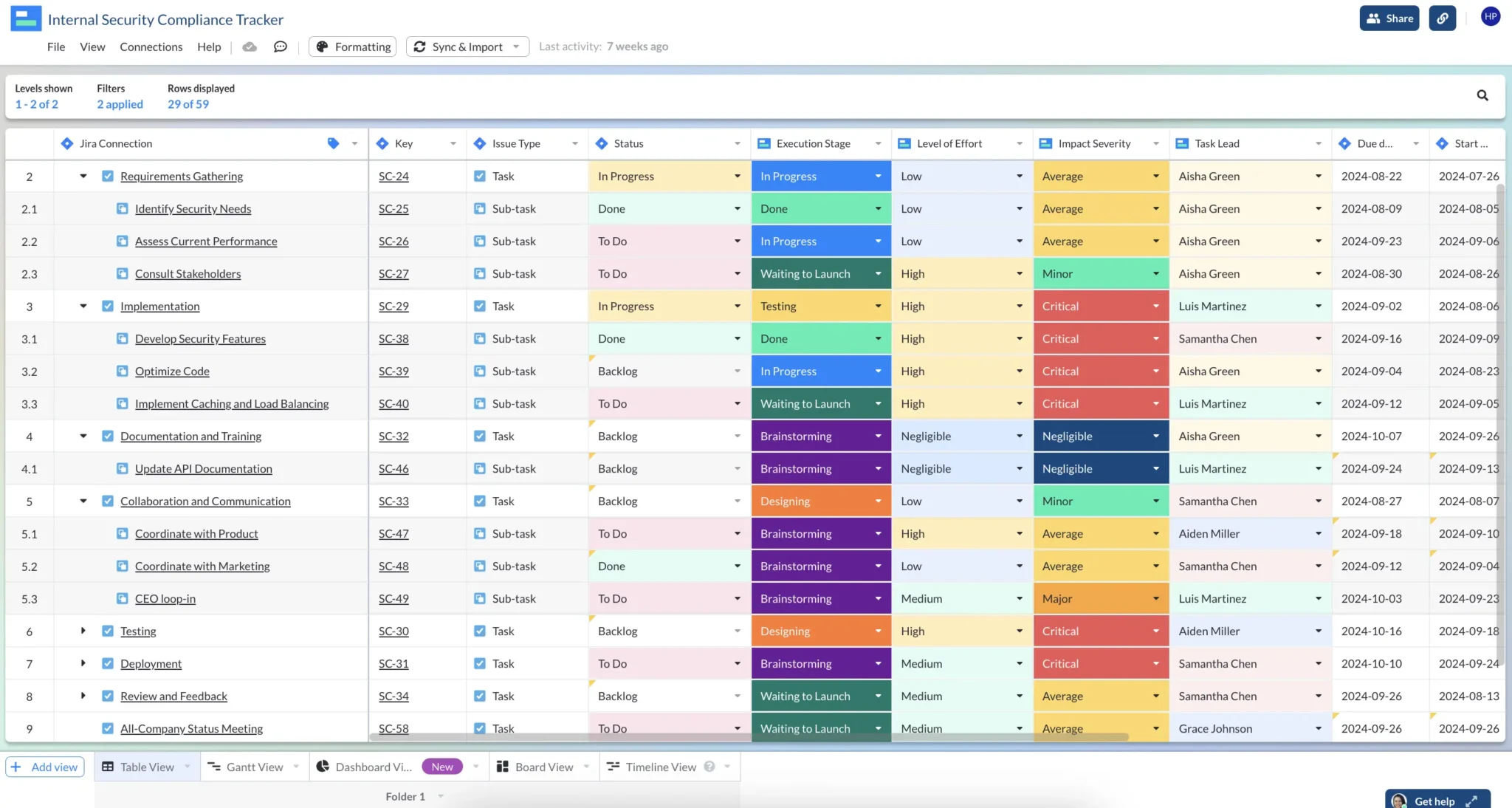
What are some key compliance reporting requirements?
There are a lot of areas where a business may need to consider compliance – health and safety standards, environmental compliance, etc. However, not all of those will apply to you as a project manager. Here are the compliance areas you’re most likely to deal with as a PM:
- Data Protection and Privacy: For almost any business, you’ll need to consider training your team in data protection laws like GDPR or HIPAA. If you also have phone or text message marketing, you also need to make sure you’ve got TCPA consent covered with further employee training.
- Human Resources: There are a number of unique issues in project management related to HR. For instance, the way you describe a job, the questions you ask in an interview, and how employees are classified are all subject to regulation. Forbes has a good overview of HR compliance issues, if you’re looking for a place to start.
- Legal: Legal compliance has a lot to do with making a plan for what to do if the worst should happen. For instance, you should be able to say what you’ll do if there is a data breach under GDPR or a lawsuit. These precautions will protect you from catastrophic fines and public embarrassment.
- Finance: If your project in any way involves financial services, you’ll need to deal with financial regulations, like those set out by FINRA. Or if your organization accepts payments, you may need to consider how to put together PCI DSS compliance reports.
- Industry-Specific Regulations: Depending on your industry, you may have specific regulatory requirements. For instance, pharmaceutical companies have to think about FDA regulations.
Why do I need compliance reporting?
Compliance reporting is designed to protect your organization, and that’s part of the reason compliance can be such a thorny issue; there are a lot of regulations to take into account. It’s worth keeping up with it all, though for a variety of reasons. Here are some of the big ones:
- Regulatory Requirements: In industries that are heavily regulated (finance, health, and so on), compliance reporting keeps you current with the laws, regulations, and standards set by government agencies. Which, in turn, helps avoid legal penalties, fines, and other sanctions.
- Risk Management: Compliance doesn’t just keep the governmental agencies off your back. Compliance reporting helps identify, assess, and mitigate risks associated with non-compliance. By ensuring that all regulatory and legal requirements are met, you can prevent scary outcomes, like project delays, financial losses, and damage to your business’s reputation.
- Stakeholder Confidence: Stakeholders, including clients, investors, and partners, often need reassurance that a project is keeping up with relevant regulations and standards. Compliance reporting builds trust and confidence among stakeholders, showing that the project is being conducted responsibly.
- Quality Assurance: Complying with standards often leads to higher-quality outcomes. In other words, a project that meets all regulatory and industry standards often has better overall quality in its project deliverables.
So in other words, compliance is important. It makes sense to have your compliance reporting requirements covered from a financial, legal, and professional standpoint.
When can I expect to see compliance reporting requirements?
That said, you don’t want to start the compliance reporting process after a project is done. Instead, project managers need to think about compliance throughout the entire lifecycle of a project. Take a look at some of the key points in the project lifecycle when you should be thinking about compliance reporting:
1. Project Initiation: You should check that the project will comply with regulations from the get go. Also note which regulatory bodies may have compliance requirements – you might want to include those groups in your list of stakeholders as well.
2. Project Planning: Save yourself trouble down the line by developing a compliance plan outlining how the project will meet regulatory requirements. That includes calling out compliance risks and developing mitigation strategies, as well as saving budget and resources for compliance-related activities. You can also set up your compliance documents at this stage, so you don’t have to create them down the line.
3. Project Execution: In addition to making sure your project team is trained on compliance requirements and protocols, you should have quality control measures in place to ensure compliance. This is also a good time to collect the data you’ll need for compliance reporting. And you should think about conducting regular audits to ensure ongoing compliance and identify potential issues early.
4. Project Monitoring and Controlling: Make compliance reporting part of project monitoring. For example, you should consistently monitor project performance against compliance benchmarks. If required, you should also be generating and submitting compliance reports to regulatory bodies and stakeholders as required.
5. Project Closure: When a project hits the finish line, conduct final compliance audits to ensure all requirements have been met. Then complete and archive all compliance-related documentation, so it’s ready if you need it down the line.
How Compliance Reporting Requirements Can Trip You Up
Compliance reporting can go wrong for a project manager in several ways. But that doesn’t mean you can’t avoid these common pitfalls.
Incomplete or Inaccurate Data:
If the data used for compliance reporting is incomplete, inaccurate, or outdated, the reports you generate won’t be reliable. When that happens, you can misunderstand a project’s compliance status and can lead to potential regulatory violations.
The Fix: This one’s easy: keep your data up to date. You should also have rules in place for collecting data and ensure your team is following those rules consistently. Then perform regular checks to make sure that the data you’re recording is the data you need. That way you’re not scrambling when reports are due.
Tools with two-way integrations are a great way to keep your data up to date across apps without needing to put in active effort. Visor, for instance, automatically syncs with Jira bi-directionally, so you push one button and both tools have complete data. Try it for free!
Two-way integration panel in Visor

Misinterpretation of Regulations
It’s probably no surprise that regulations and standards can be complex – not to mention they’re often subject to interpretation. Misunderstanding or misinterpreting these requirements can result in non-compliance, even if you think you’re sticking to all the rules.
The Fix: Check in with whoever handles compliance for your whole organization, whether that’s a legal team, data protection officer, or a compliance officer. If those aren’t an option, there are plenty of sites that break down the regulations into understandable language, like the European Union’s post on “What is General Data Protection Regulation in simple terms?”
Lack of Proper Documentation
Inadequate or missing documentation can make it hard to manage compliance reporting. Without proper records, it is difficult to show you’re in compliance, making your project more vulnerable to scrutiny during audits.
The Fix: Set up rules for both what information must be produced for audits – and where it’ll be saved. Having a set of guidelines for producing and protecting documentation will save you trouble when you’re putting your compliance reporting together.
A great way to stay on top of what you need to document is to have an effective high-level view of your project. Particular numbers you may need to track, like hours worked per employee or percent of meetings with a client, can be arranged into a helpful dashboard so you’ll be able to track changing data at an easy glance.
Dashboard reporting in Visor
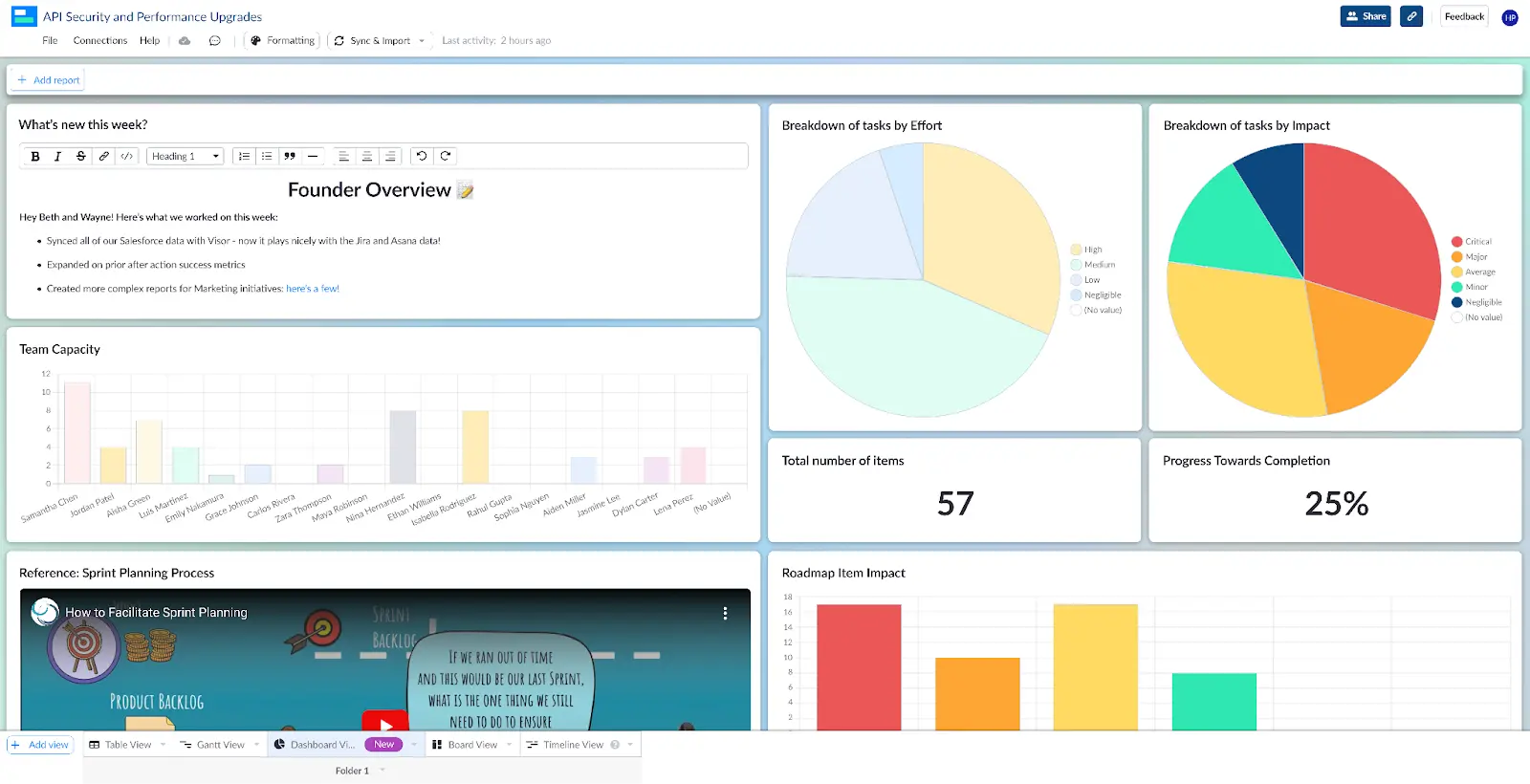
Insufficient Training and Awareness
If project team members aren’t trained or aware of compliance requirements, they may inadvertently violate regulations.
The Fix: Set up continuous education and awareness programs to make sure your team is able to stay in compliance and produce accurate materials for compliance reports.
By being aware of these potential pitfalls and actively working to avoid them,you can ensure you’re producing more reliable and effective compliance reporting. That safeguards your projects – and your whole organization – from the risks that come with non-compliance.
Tips to Make Sure You’re Never Out of Compliance
We’ve covered what not to do, but how can you make sure you’re keeping your team in compliance? We’ve got a few tips to help you build compliance into how your team runs so that you’re always ready for compliance reporting.
Keep Detailed and Organized Documentation
Regulatory bodies love documentation. And one of the easiest ways to make them happy is with thorough and well-organized records. That includes info on all project activities, decisions, communications, and compliance-related actions. You can use a centralized document management system to store and manage all compliance documents, making it easier to retrieve and review them when needed.
There are even specific Governance, Risk & Compliance (GRC) software options you can use to keep organized – the Digital Project Manager has a good rundown of the best ones. Tools like these ensure that any necessary information is easily accessible and can be quickly referenced during compliance reporting, audits, or reviews.
One of the best things about keeping your data centralized in a portfolio management tool is that all of the information from different apps and areas is in one place. You don’t have to chase down information under stress – you can trust that you’re on top of it before an audit happens.
Dashboard report options in Visor
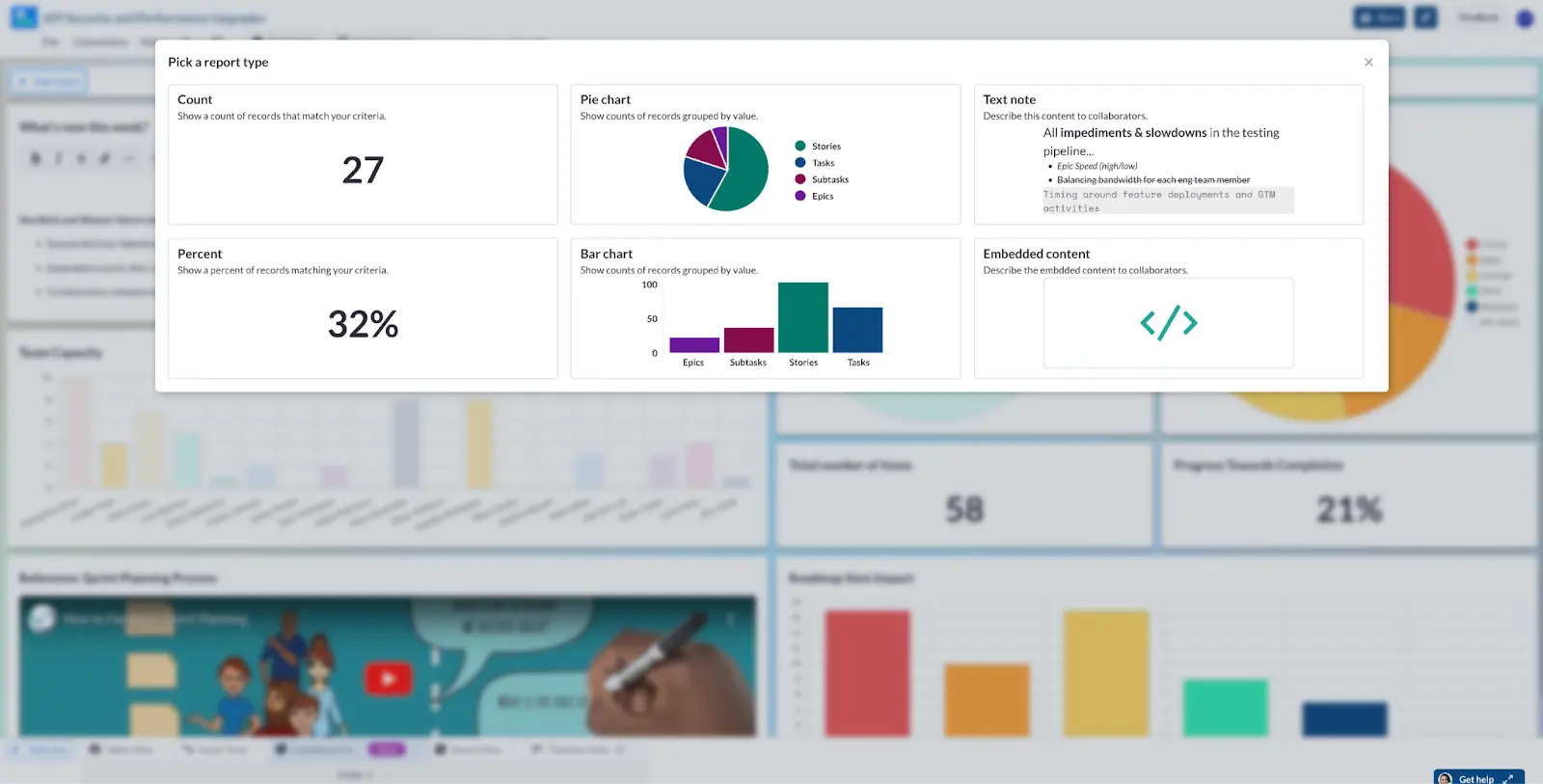
Keeping up to date project dashboards also makes a big difference in sharing confidence. You can share the relevant information with your stakeholders in visually compelling, easy to understand charts, and never bog them down with too much data.
Schedule Regular Compliance Reporting Audits and Reviews
Just as you’d test a feature or product before you ship it, you should be regularly testing your compliance.
Periodic internal audits and reviews can help you assess if you’re in compliance with regulations and standards. Regular audits help identify and address compliance issues early, making sure you’re always sticking to relevant regulations and have prepared the project for external audits or compliance reporting.
A sub-tip that goes with those regular compliance reviews: set up review checklists and audit procedures so that you know you’re covering everything during these internal reviews.
When things go wrong, especially on a continuous basis, you can use project management troubleshooting techniques like root cause analysis, or the five why’s approach, to get to the bottom of any structural, cultural, or other issues that are causing repeated compliance failures to occur.
Hold Continuous Training and Education on Compliance Reporting Requirements
We said this earlier, but it’s important to reiterate it: if your team doesn’t know compliance requirements they can’t adhere to them. Basically, well-trained team members are more likely to follow compliance protocols correctly. That cuts back on the risk of non-compliance and ensures that the team is ready for compliance reporting.
And it can’t be a one-and-done situation. Regulations change, so you should hold updated training sessions to update the team whenever new regulations come down the pike.
Foster a Culture of Compliance
Compliance shouldn’t be something your team does once in a while when reporting is required. The best way to simplify compliance reporting is to foster an environment where you talk about compliance regularly and team members feel comfortable reporting potential non-compliance.
If your team knows you prioritize compliance and ethical behavior, you’ll get team members to be more vigilant and proactive about meeting regulatory requirements. That’ll make compliance reporting more accurate and comprehensive – while taking some of the pressure off your shoulders.
Having a tool that allows your whole team to access and edit their own data directly is a great way to get everyone on board with compliance reporting.
Sharing options in Visor
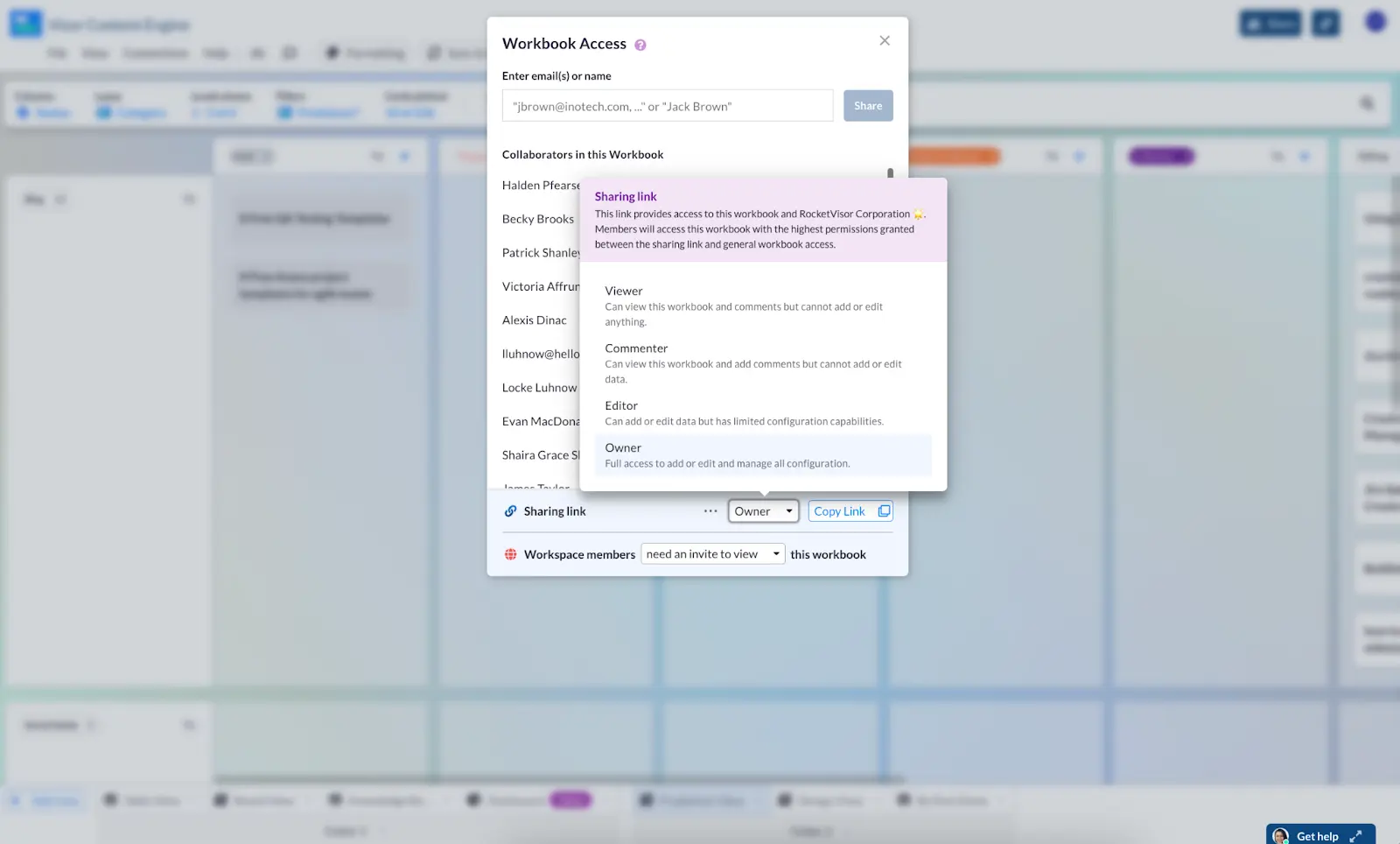
Visor offers a variety of access levels, allowing you to share information to varying degrees. So your team can edit the information that matters without needing to worry about accidentally impacting someone else’s work.
Make Meeting Compliance Reporting Requirements a Team Sport
Meeting your compliance reporting requirements is a big lift, but if you bring your team on board, ensuring they’re trained and aware that compliance is a priority, you won’t be handling all that compliance reporting on your own.
It’s also important to make sure you and your team are consistently saving data that’ll come up later during compliance reporting or audits. You can do that by maintaining a data-sharing system your team – and stakeholders – can easily access, like Visor.
Visor makes it easy to visualize and share data with stakeholders. Visor’s reporting is modern, sleek, and beautiful, giving you the tools you need to seamlessly integrate compliance reporting into project management, safeguarding your organization from risks and building stakeholder confidence.
Visor offers a ton of agile templates for things like project backlogs and sprint backlogs, along with more waterfall visualizations like project roadmap templates to help you drive crystal clear alignment.





